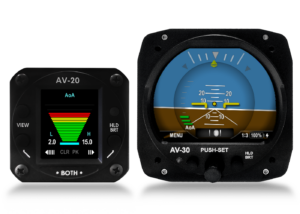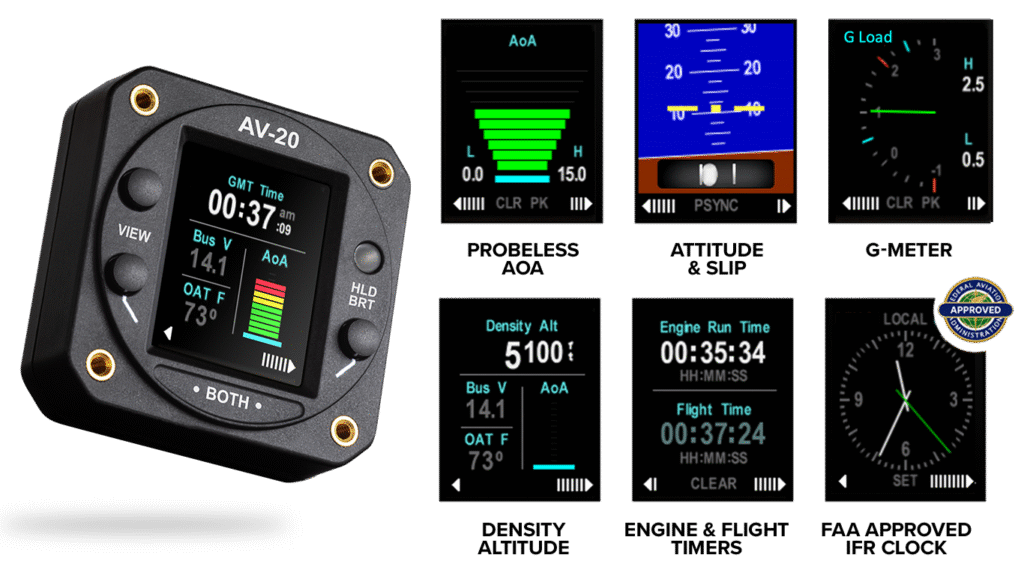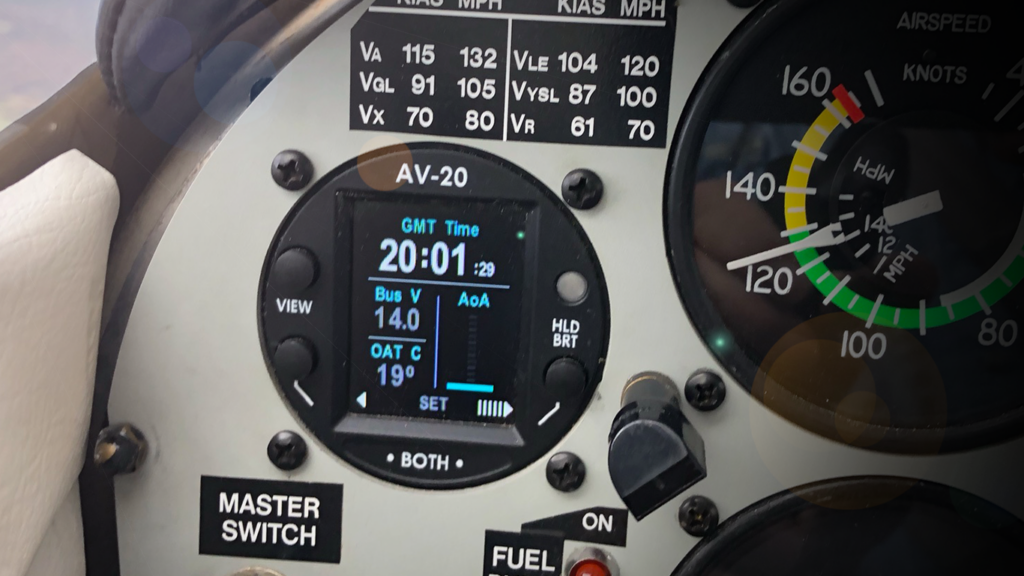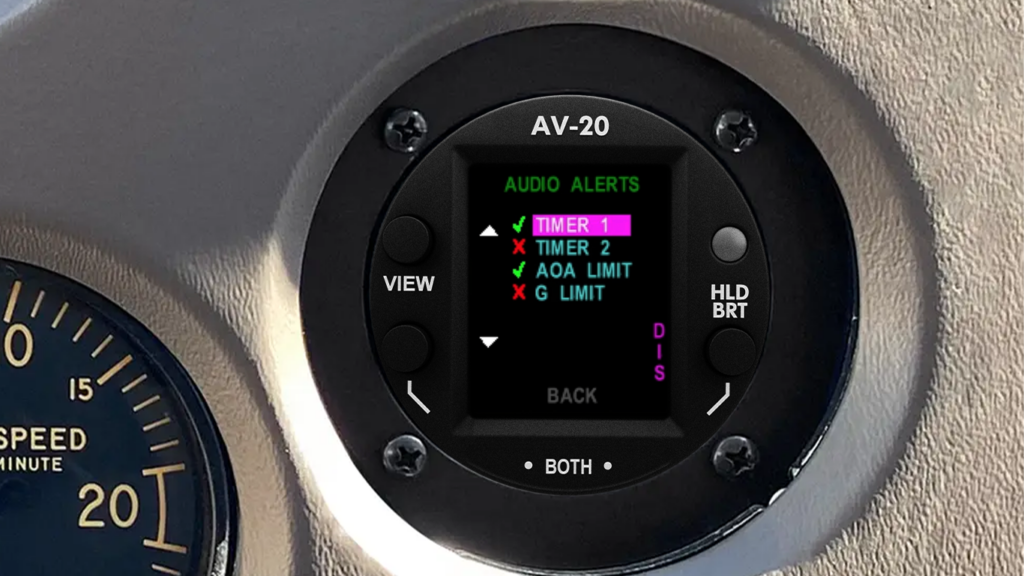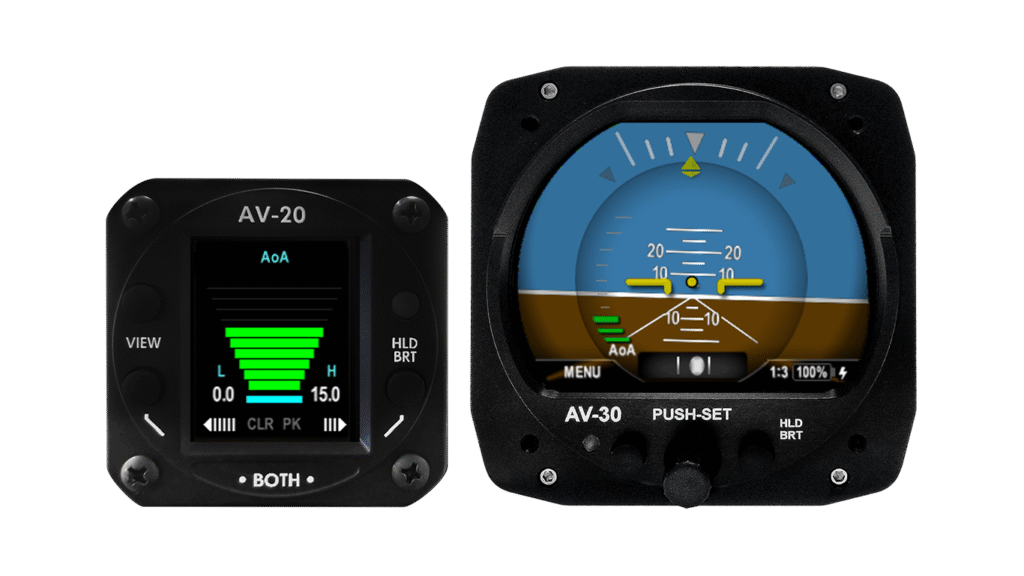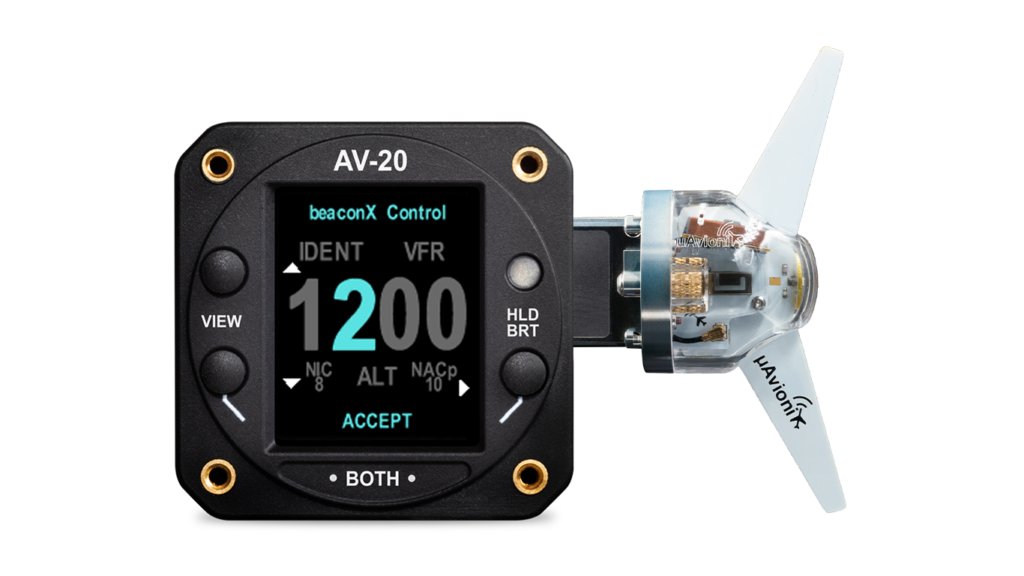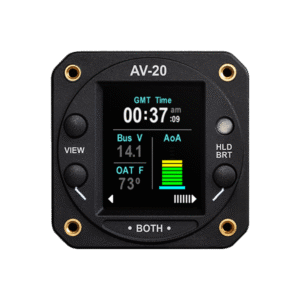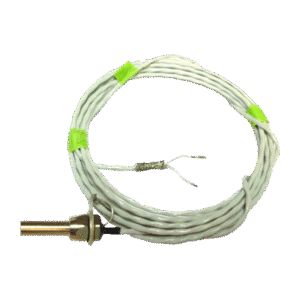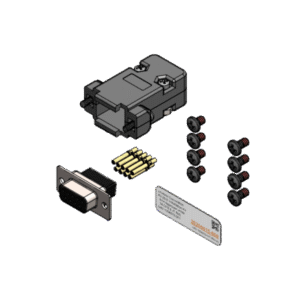Big Features, Small Package—Essential Backup for Every Cockpit
Available for certified and experimental aircraft, the AV-20 transforms your flight panel without sacrificing simplicity. Designed to fit in a standard 2-inch instrument slot, this powerful backup solution provides critical flight data, a built-in clock, and customizable alerts—all in a sleek, easy-to-install package. The AV-20-S has an FAA NORSEE (Non-required Safety Enhancing Equipment) Approval.
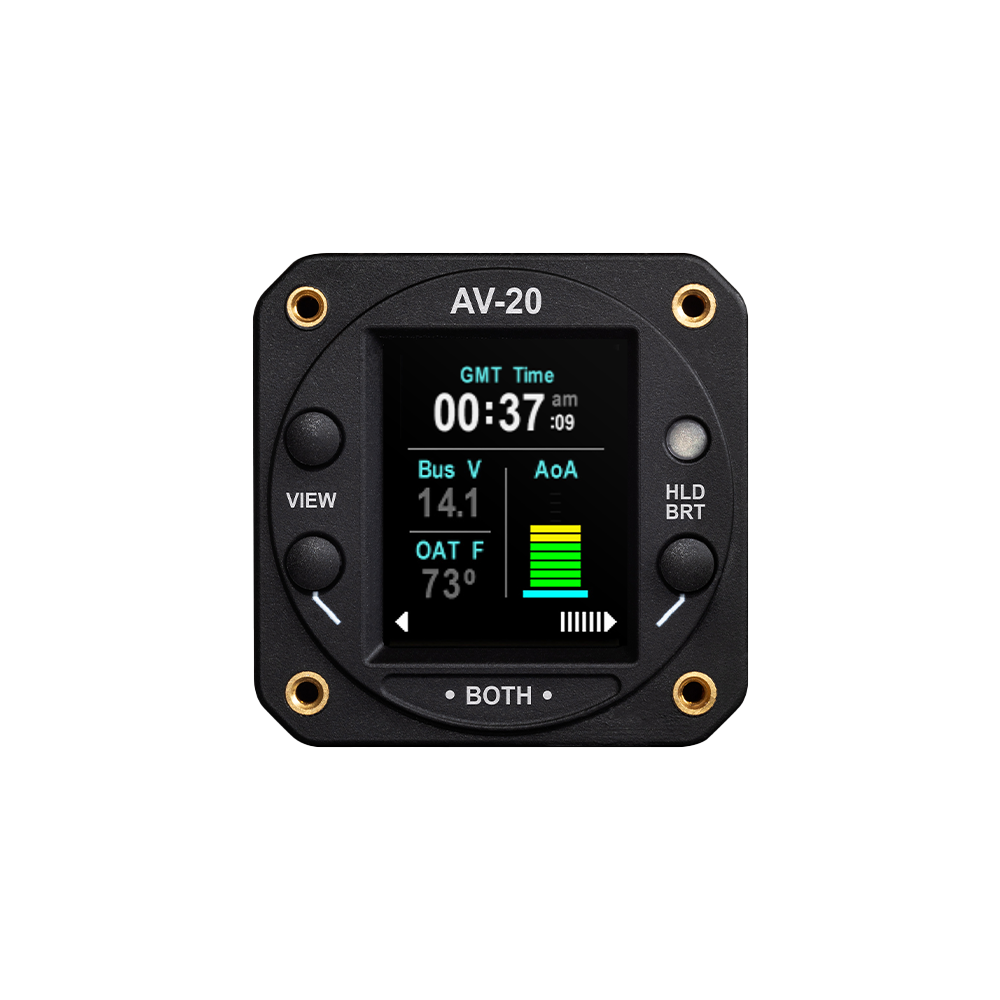
Primary Features
Additional Features
Transform your panel without sacrificing simplicity.
FAA Approved
Fully certified to meet FAA standards, ensuring reliability and compliance with aviation safety regulations. AV-20-S is also an FAA-Approved clock for both VFR and IFR aircraft.
Avoid Stalls During Critical Phases of Flight
The AV-20 alerts you visually and aurally if you approach a dangerous AoA during critical phases of flight such as landing approach.
Internal Battery
Includes a backup power source that ensures functionality and timekeeping even during power interruptions.
Go Global with tailBeaconX and AV-20-E
The AV-20-E offers full transponder control for tailBeaconX, giving pilots a compact, all-in-one solution for ADS-B compliance. Effortlessly adjust squawk codes, ident, and mode settings—all from the convenience of your AV-20.
Automatic Dimming
The AV-20-S features an intelligent light sensor that automatically adjusts the display brightness based on the ambient light conditions. This ensures optimal visibility whether flying in bright daylight or during nighttime operations, enhancing both safety and comfort without the need for manual adjustments.
Comprehensive Diagnostics
Equipped with self-testing and diagnostic capabilities, the AV-20-S continually monitors its operational status and alerts the pilot to any anomalies or system malfunctions. This proactive feature helps ensure that all system functionalities are performing at their best, reducing the risk of unexpected issues during flight.
FAQ'S
Knowledge Base
- Aircraft Compatibility
- FAA Requirements
- Installation
- Operation
- Maintenance
- Troubleshooting Tips and Tricks
What types of aircraft is the AV-20-S compatible with?
The AV-20-S is suitable for installation in Part 23 Class I and II aircraft as outlined in its NORSEE certification.
Is the AV-20-S FAA approved?
Yes, the AV-20-S is FAA approved under the NORSEE (Non-Required Safety Enhancing Equipment) policy, ensuring it meets high safety and performance standards.
What is involved in installing the AV-20-S?
The AV-20-S is designed for easy installation in a standard 2” instrument hole, with minimal aircraft modification required. Detailed installation guidelines are provided in the AV-20 Installation Manual.
How do I configure the display settings on the AV-20-S?
The AV-20-S features a user-friendly interface that allows pilots to customize display settings including brightness, audio alerts, and more directly through the unit’s setup menu.
What maintenance does the AV-20-S require?
Regular maintenance includes checking the internal battery and ensuring that the software is updated. Refer to the Pilot’s Guide for detailed maintenance instructions.
What should I do if the AV-20-S is not displaying correct information?
Ensure the unit is properly calibrated, especially for AoA and G-meter functionalities. If issues persist, consult the Troubleshooting section of the Pilot’s Guide or contact uAvionix support for assistance.
Packages
Add Outside Air Temperature (OAT) to Your AV-20
Documentation
AV-20 Manuals & Guides
Technical Specifications
| Specification | Value |
|---|---|
| Input Voltage Nominal | +10 to +32 VDC |
| Input Voltage Max | +60 VDC |
| Input Power Nominal | 3 Watts (0.25Amps @ 12VDC) |
| Input Power Max | 6 Watts (0.50 Amps @ 12VDC) |
| Required Circuit Breaker | 1 Amp |
| Operation on Battery | 30 Minutes (Standard 15°C Env) |
| Physical Attributes | |
| Mounting Configuration | 2 ¼” Round Instrument Hole |
| Dimensions wo/Connector | 2.4 x 2.4 x 1.2 Inches |
| Weight | 0.25 Lbs. |
| Electrical Connector | 9 Pin Male D-Sub |
| Pneumatic Connectors | ¼” OD Quick Connect |
| Mounting | (4X) #6-32 Machine Screws |
| Case Material | High Impact ABS Plastic |
| Environmental | |
| Operating Temp | -20°C to +55°C |
| Storage Temp (48 Hrs) | -30°C to +80°C (Via Analysis) |
| Humidity (48 Hrs) | 90% RH (Via Analysis) |
| Display | |
| Diagonal Size | 1.8” |
| Contrast Ratio (Typical) | 500 |
| Brightness (Typical) | 1000 cd/m2 |
| Viewing Angle Left/Right | 60° |
| Viewing Angle Up | 45° |
| Viewing Angle Down | 10° |
| Backlight Lifetime (Typical) | 50,000 Hrs |
AV-20-S Documentation (NORSEE Certified)
AV-20-E Documentationn (Experimental Aircraft Only)
Service Bulletins
Downloads
Resources
